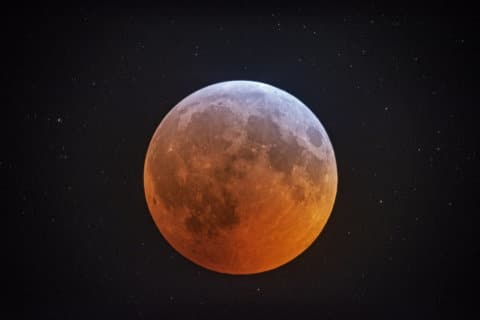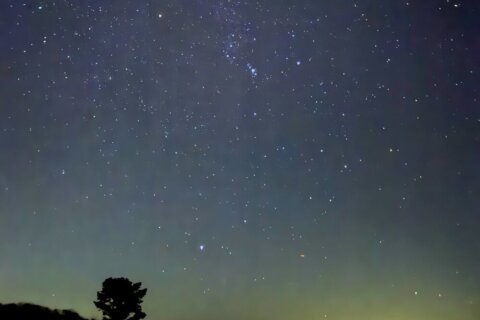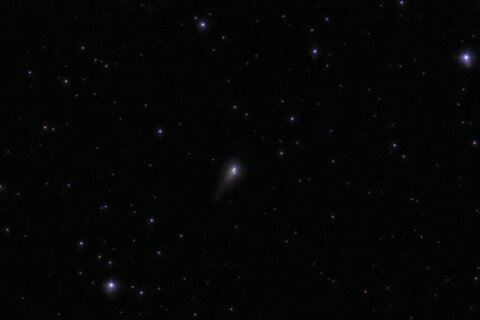


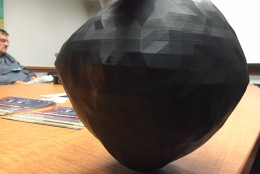
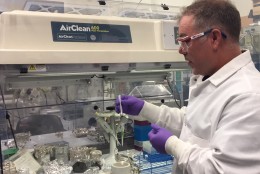
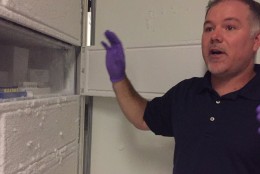
GREENBELT, Md. — NASA’s newest space mission is seeking to offer more details about the history of the solar system and the origin of life.
The OSIRIS-REx mission which stands for Origins, Spectral Interpretation, Resource Identification, Security and Regolith Explorer is an asteroid sample return mission.
“It will be going out to a near Earth asteroid and mapping out the surface and collecting a bunch of rocks and soil to bring back here to Earth to study in our laboratories,” Amy Simon, the mission’s instrument scientist at the Goddard Space Flight Center, told WTOP.
The mission hopes to help answer some lofty space-related questions.
“How did life start of Earth?” asked NASA Astrobiologist Daniel Glavin. “Could meteorites have seeded other planets in our solar system, such as Mars?”
A space craft will fly to a nearby asteroid named Bennu, analyze it using its exterior with photos and other technology, and then will hover over it to use a vacuum-like device to collect a sample to take back to Earth.
“What we want to learn is about the building blocks of the solar system,” Simon said. “This is a very dark asteroid. We think it has carbon and hydrocarbons, organics. We want to understand what pieces were around the solar system, how they contributed to life here on Earth.”
“One of the theories is that meteorites from asteroids and comets could have seeded the early Earth with some of the building blocks for life,” Glavin added. “We know from meteorite analyses that some of these meteorites have these unusual compounds, but they have been contaminated by the Earth.”
This mission will give researchers here on Earth samples that have not been contaminated by the planet’s atmosphere of impact on the ground. It is also the purity of the asteroid that makes it appealing for these scientists.
“Most of the planets and moons were pretty thoroughly melted, so they don’t preserve the chemistry and the rock structures that existed early in the solar system history,” Lucy Lim, OSIRIS-REx assistant project scientist, explained. “Certain types of asteroids are made out of the leftovers from the solar system’s formation, so they preserve a lot more of the chemistry that was present 4.5 billion years ago at the beginning of the solar system’s formation.”
Along with scientific curiosities about the history of our planet and the solar system, there is one other perspective that made Bennu a quality target for research.
“Bennu has been classified as a potentially hazardous asteroid,” Glavin said. “Sometime in like 2180-something, there’s a small probability, very low .037 percent chance, that it could hit the Earth.”
So, researchers want to have a better idea of whether this asteroid, which Simon described as being the size of a large mountain, truly does pose a threat to Earth.
If it does, “[We could] potentially build a big laser or find other ways to push it a little bit if it turns out that it could impact the Earth,” Glavin explained in jest.
“There’s really no worry with Bennu, no threat that it’s going to hit the Earth in the next 100 years and a very tiny threat several hundred years down the road, so I’m not worried. I can sleep at night.”
The space craft is scheduled to launch Sept. 8 at Cape Canaveral. It is expected to reach Bennu by August 2018, collect samples at around July 2020, leave the asteroid March 2021 and return to Earth by September 2023.
NASA said this project costs about $800 million.

